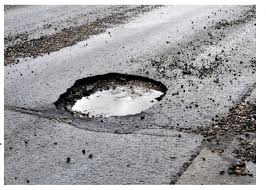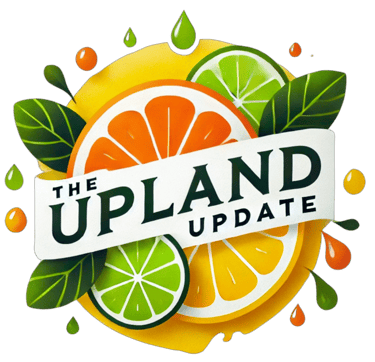Investing in Infrastructure but at what cost?


Investing in Roads Without Sacrificing Upland’s Identity
Ensuring Responsible Decision-Making
Tonight’s staff report does not provide enough detail for the City Council to responsibly make budget cuts. Without a clear understanding of the potential impacts, we cannot make informed decisions. We need specific data, not generalities, before altering programs that could have long-term consequences for our community.
With the failure of Measure N last November, voters made it clear they do not support a tax increase for road maintenance. However, that does not change the reality—our roads are deteriorating, and repair costs continue to rise. Without new revenue sources, the City must implement cost-saving measures and reallocate funds toward critical infrastructure, particularly road rehabilitation.
To put the issue into perspective:
Full road rehabilitation costs approximately $1 million per lane, per mile.
A basic mill and overlay costs between $250,000 and $350,000 per mile.
Rehabilitating just one mile of a two-lane road in each direction costs roughly $4 million.
Upland has 192 miles of pavement in need of maintenance.
The staff report outlines potential budget cuts, which would save $4.3 million. This is a substantial amount of money; however, the reality is that these savings would only cover the rehabilitation of one mile of a two-lane road—while Upland has 192 miles in need of repairs. While this is a step forward, it falls far short of the long-term solution required.
Currently, the City allocates $6 million per year to road maintenance. However, the recent citywide Pavement Management System survey determined that Upland needs $30 million annually for the next five years to raise our Pavement Condition Index (PCI) score from 61 (D-) to 70 (C). In other words, it will take $150 million over five years to bring our roads to a fair grade massive funding gap that cannot be ignored.
Investing in our roads is not optional, it is a necessity. Some residents may see proposed budget cuts as retaliation for the failure of Measure N, but that is simply not the case. This is about responsible governance, not punishing voters.
Regardless of Measure N’s outcome, our roads are still crumbling, and repair costs continue to rise. Each year of inaction makes the problem more expensive. If Measure N had passed, we would have had additional revenue for road maintenance. Since it did not, we must make difficult financial decisions with the resources available. Ignoring this issue is not an option.
While we must reallocate funds to address this crisis, we must also be mindful of preserving Upland’s identity. Budget cuts should not strip away the very programs that make Upland more than just a network of roads.
Consider:
Families who rely on city programs.
Seniors who find companionship at the community center, avoiding isolation.
Small business owners in our city wide and in our historic downtown, who see city-sponsored events as essential in order to keep their doors open for business.
At what point do we cut so deeply that Upland loses the very identity that makes Upland unique? At what point does the drive to pave one more mile of road come at the expense of the community that lives alongside it??
These programs, these events, these investments in our people are what give Upland character, connection, and identity. If we eliminate them, we risk ending up with smooth roads but empty spaces.
We must be deliberate and transparent in our decision-making. That is why I remind everyone of some of the key goals and objectives outlined on page 102 of the budget:
Expand citizen participation in local government.
Enhance quality of life through long-term and short-term fiscal and operational plans.
Revitalize commercial activity and expand economic development opportunities.
Strengthen public engagement to ensure transparency and community involvement.
The programs we consider reducing are not just budget line items, they represent services that directly impact residents, families, and businesses. That is why we must develop a clear and comprehensive plan that includes:
Identifying potential program cuts, cost-saving measures, and revenue-generating opportunities.
Ongoing community workshops to gather public input on budget priorities.
A direct mailer explaining proposed budget reallocations.
An online survey to gauge resident feedback.
Our goal should be to engage residents, businesses, and stakeholders at every step. Financial decisions should be made with transparency, inclusivity, and data-driven metrics. By doing so, we can invest in both infrastructure and people, ensuring progress while preserving the character of Upland.


